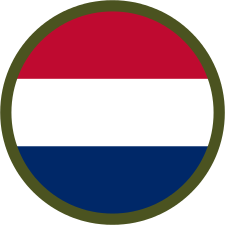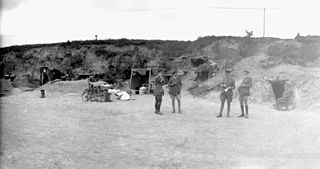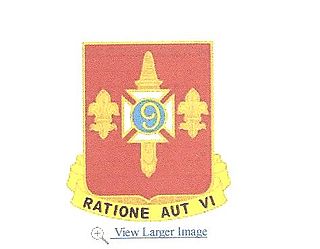| 49th Army Corps | |
|---|---|
| Country | |
| Allegiance | Imperial Russian Army |
| Engagements | World War I |
The 49th Army Corps was an Army corps in the Imperial Russian Army.
| 49th Army Corps | |
|---|---|
| Country | |
| Allegiance | Imperial Russian Army |
| Engagements | World War I |
The 49th Army Corps was an Army corps in the Imperial Russian Army.

The Third Battle of Ypres, also known as the Battle of Passchendaele, was a campaign of the First World War, fought by the Allies against the German Empire. The battle took place on the Western Front, from July to November 1917, for control of the ridges south and east of the Belgian city of Ypres in West Flanders, as part of a strategy decided by the Allies at conferences in November 1916 and May 1917. Passchendaele lies on the last ridge east of Ypres, 5 mi (8 km) from Roulers, a junction of the Bruges-(Brugge)-to-Kortrijk railway. The station at Roulers was on the main supply route of the German 4th Army. Once Passchendaele Ridge had been captured, the Allied advance was to continue to a line from Thourout to Couckelaere (Koekelare).
The British Expeditionary Force (BEF) was the six divisions the British Army sent to the Western Front during the First World War. Planning for a British Expeditionary Force began with the 1906–1912 Haldane Reforms of the British Army carried out by the Secretary of State for War Richard Haldane following the Second Boer War (1899–1902).

The American Expeditionary Forces (AEF) was a formation of the United States Armed Forces on the Western Front during World War I, comprised mostly of units from the U.S. Army. The AEF was established on July 5, 1917, in France under the command of then-Major General John J. Pershing. It fought alongside French Army, British Army, Canadian Army, British Indian Army, New Zealand Army and Australian Army units against the Imperial German Army. A small number of AEF troops also fought alongside Italian Army units in 1918 against the Austro-Hungarian Army. The AEF helped the French Army on the Western Front during the Aisne Offensive in the summer of 1918, and fought its major actions in the Battle of Saint-Mihiel and the Meuse-Argonne Offensive in the latter part of 1918.

The Canadian Corps was a World War I corps formed from the Canadian Expeditionary Force in September 1915 after the arrival of the 2nd Canadian Division in France. The corps was expanded by the addition of the 3rd Canadian Division in December 1915 and the 4th Canadian Division in August 1916. The organization of a 5th Canadian Division began in February 1917 but it was still not fully formed when it was broken up in February 1918 and its men used to reinforce the other four divisions.

The 17th (Northern) Division was an infantry division of the British Army, a Kitchener's Army formation raised during the Great War.

The 27th Infantry Division was a unit of the Army National Guard in World War I and World War II. The division traces its history from the New York Division, formed originally in 1908. The 6th Division designation was changed to the 27th Division in July 1917.

The 19th (Western) Division was an infantry division of the British Army, part of Kitchener's Army, formed in the Great War.

No. 20 Squadron is the Royal Air Force's Operational Conversion Unit (OCU) for ground-based Tactical Air Command and Control, and Air Battle Management. It is part of the RAF's Air Surveillance and Control System (ASACS) and is based at RAF Boulmer. It was allocated the role on 1 June 2021.

The Aviation Section, Signal Corps, was the aerial warfare service of the United States from 1914 to 1918, and a direct statutory ancestor of the United States Air Force. It absorbed and replaced the Aeronautical Division, Signal Corps, and conducted the activities of Army aviation until its statutory responsibilities were suspended by President Woodrow Wilson in 1918. The Aviation Section organized the first squadrons of the aviation arm and conducted the first military operations by United States aviation on foreign soil.

The Women's Army Auxiliary Corps (WAAC), known as Queen Mary's Army Auxiliary Corps (QMAAC) from 9 April 1918, was the women's corps of the British Army during and immediately after the First World War. It was established in February 1917 and disbanded on 27 September 1921.
The 10th Infantry Brigade was a Regular Army infantry brigade of the British Army formed during the Second Boer War in 5th Division, and during both World Wars the brigade was part of the 4th Infantry Division.

The 29th Infantry Brigade was an infantry brigade unit of the British Army. It was originally raised in 1914 and saw service during the First and Second World Wars and the Korean War.

XII Corps was an army corps of the British Army that fought in the First and Second World Wars. In the First World War, it formed part of the British Salonika Force on the Macedonian front. In the Second World War, it formed part of the British Second Army during Operation Overlord and the subsequent North-West Europe Campaign of 1944-46.
The 2nd Army was a World War I and World War II field army of the Royal Italian Army.

75th Division was an infantry division of the British Army in World War I. It was raised in the field by the Egyptian Expeditionary Force (EEF) in 1917 and it included British, Indian and South African troops. It served in the Middle East during the Sinai and Palestine Campaign being involved in the Battles of Megiddo.
The United States Army's enlisted rank insignia that was used during World War I differs from the current system. The color scheme used for the insignia's chevron was olive drab for field use uniforms or one of several colors depending on the corps on dress uniforms. The chevron system used by enlisted men during World War I came into being on July 17, 1902, and was changed to a different system in 1919. Specification 760, which was dated May 31, 1905, contained 45 different enlisted insignia that varied designs and titles by different corps of the Army. General Order Number 169, which was enacted on August 14, 1907, created an even larger variety of enlisted rank insignia. Pay grades similar to the current system were not yet in use by the U.S. Army, and instead, the pay system reflected the job assignment of the soldier rather than their rank. By the end of World War I, the system contained 128 different insignia designs.
The Russian Special Army was a World War I Russian field army that fought on the Eastern Front.

The 244th Air Defense Artillery Regiment is an air defense artillery regiment of the United States Army first formed on June 24, 1799 as the 6th Regiment of Infantry (NYNG).
The 13th Army Corps was a corps of the Imperial Russian Army, formed in the 1870s. The corps fought in the Russo-Turkish War and World War I, and was disbanded with the collapse of the Imperial Russian Army after the Russian Revolution. During peacetime, it was stationed in the Moscow Military District.
The 23rd Army Corps was an Army corps in the Imperial Russian Army.